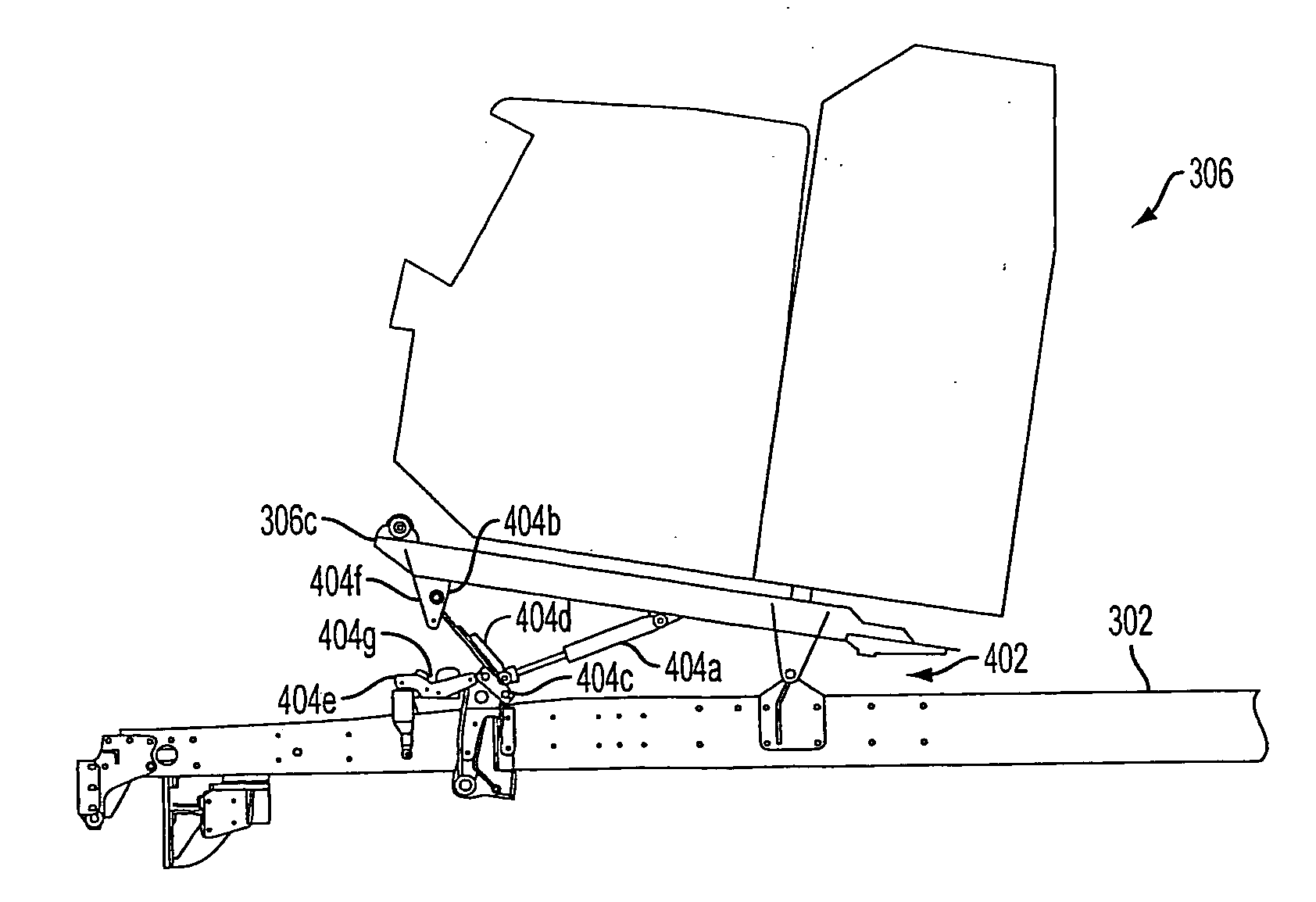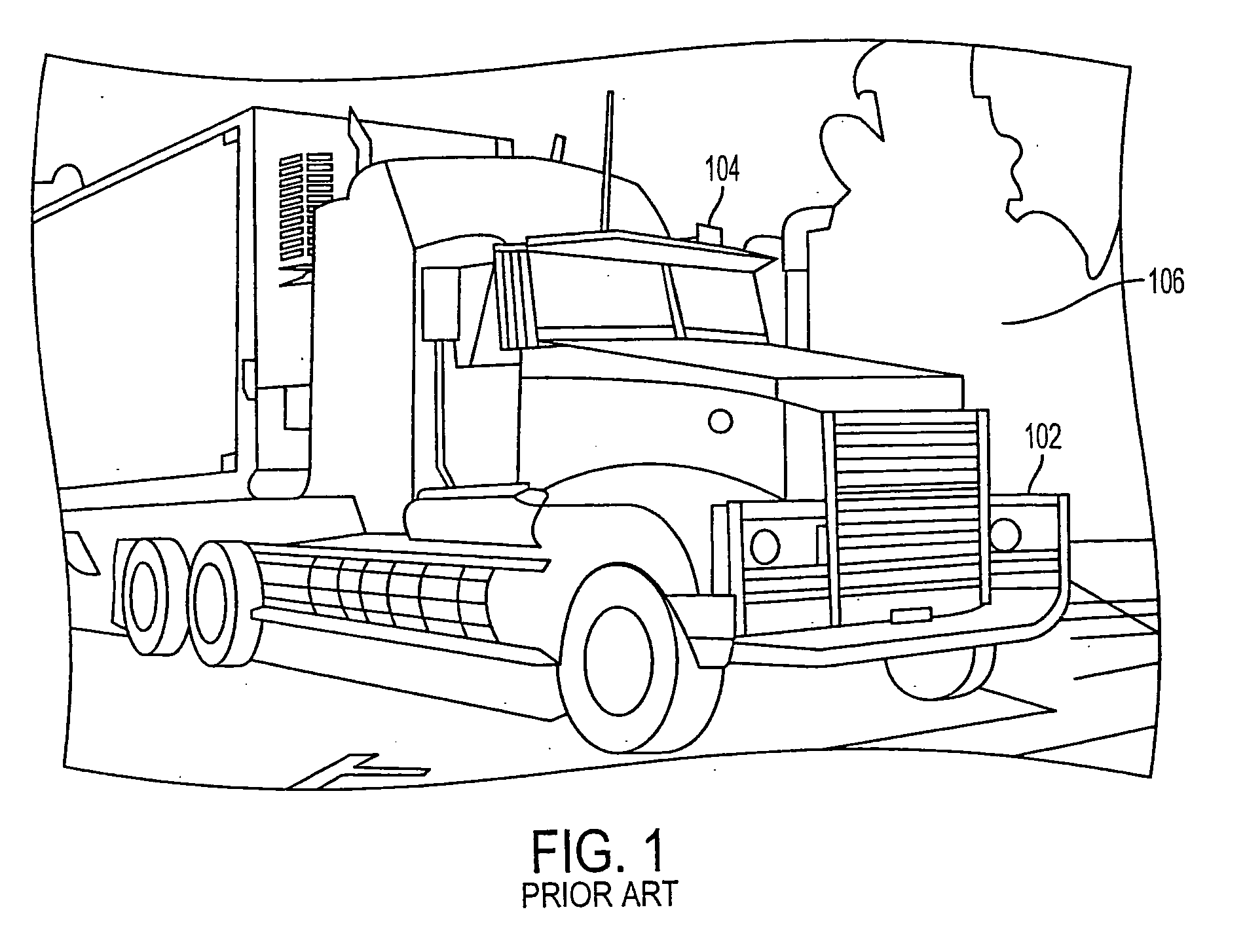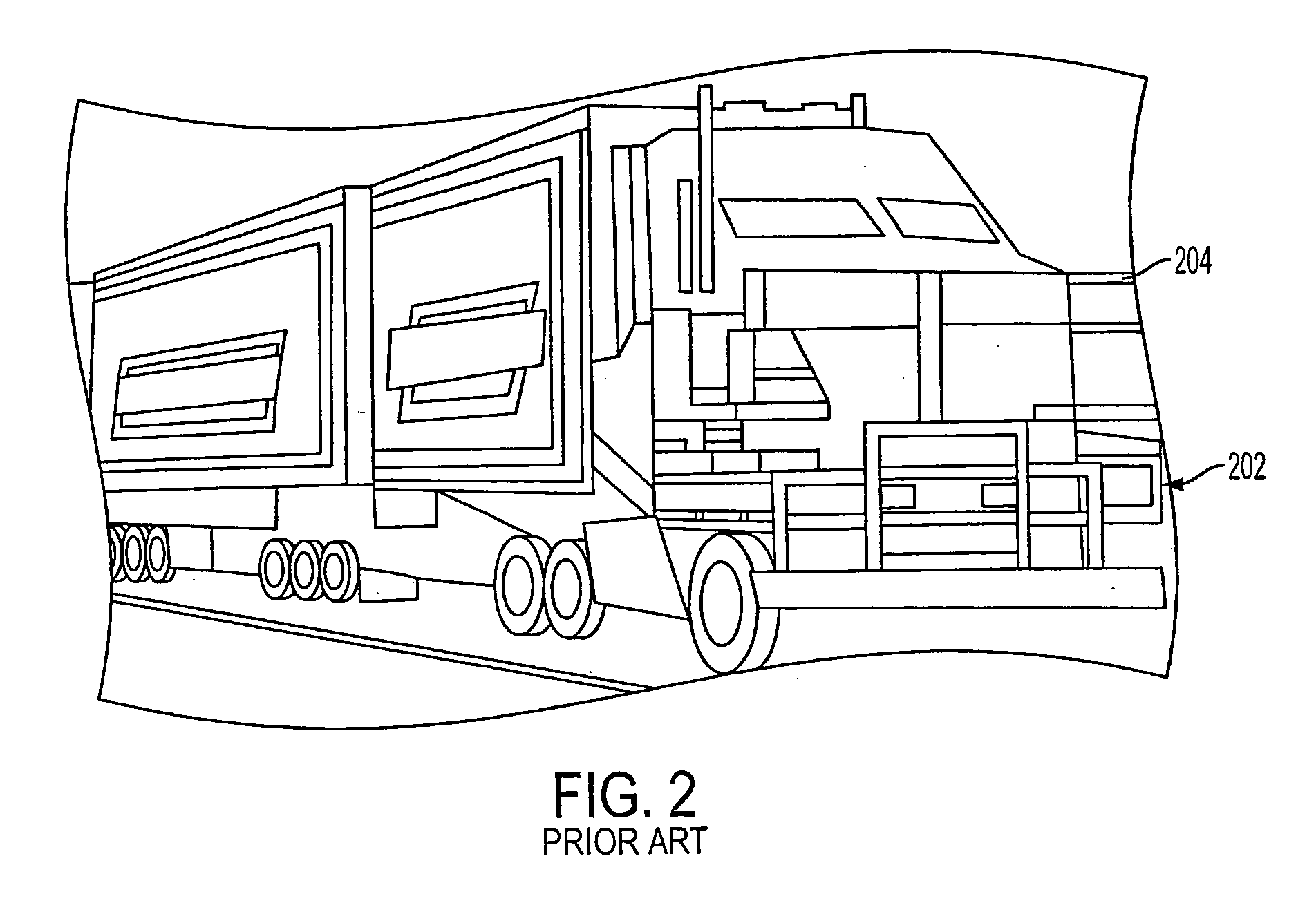Truck architecture
- Summary
- Abstract
- Description
- Claims
- Application Information
AI Technical Summary
Benefits of technology
Problems solved by technology
Method used
Image
Examples
Embodiment Construction
[0024]FIG. 3 is a side view of an improved truck architecture according to an embodiment of the present invention. Truck 300 includes a truck frame 302, an engine 304, a cab 306, a hood 308, gas tanks 310 and wheels 312. Various components such as drive shaft, gearing, etc. are not shown in order to simplify the drawing.
[0025] The engine 304 is mounted to the frame 302 by conventional means. As can be seen, the hood 308 is positioned forward of the cab 306 but does not entirely cover the engine 304. A portion of the engine 304 is also positioned underneath the cab 306 (and driver (not shown)). Thus, the engine compartment 304a is formed under both the hood 308 and the cab 106. The engine is positioned such that approximately twenty-five percent to seventy-five percent of the engine is positioned under the cab, preferably, approximately fifty percent. As a result, the overall length L of the truck 300 can be shortened as compared to that of a Conventional. However, the advantages of...
PUM
 Login to View More
Login to View More Abstract
Description
Claims
Application Information
 Login to View More
Login to View More - R&D
- Intellectual Property
- Life Sciences
- Materials
- Tech Scout
- Unparalleled Data Quality
- Higher Quality Content
- 60% Fewer Hallucinations
Browse by: Latest US Patents, China's latest patents, Technical Efficacy Thesaurus, Application Domain, Technology Topic, Popular Technical Reports.
© 2025 PatSnap. All rights reserved.Legal|Privacy policy|Modern Slavery Act Transparency Statement|Sitemap|About US| Contact US: help@patsnap.com



